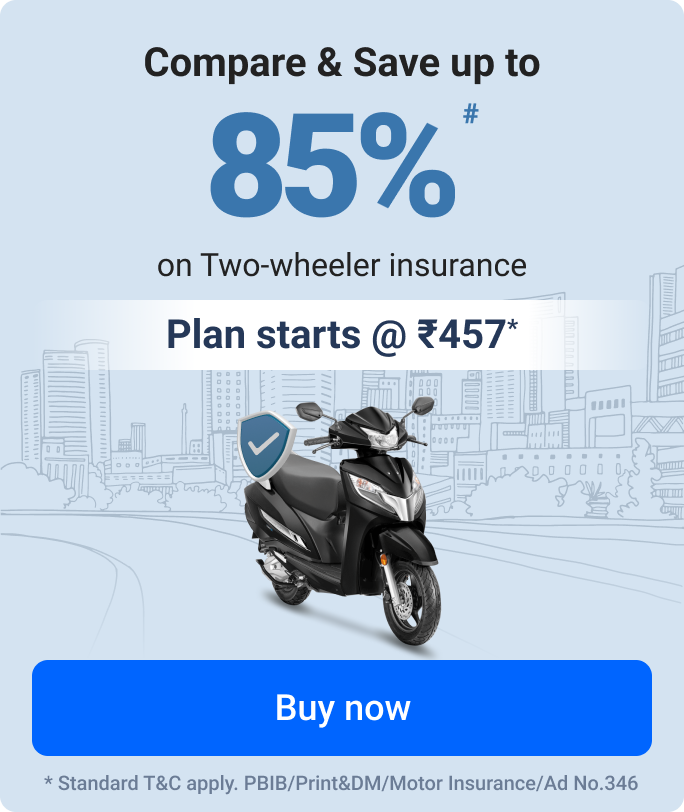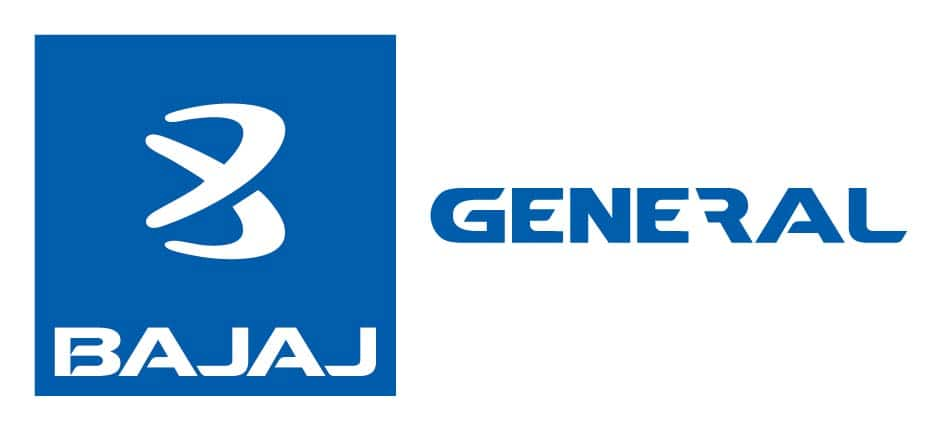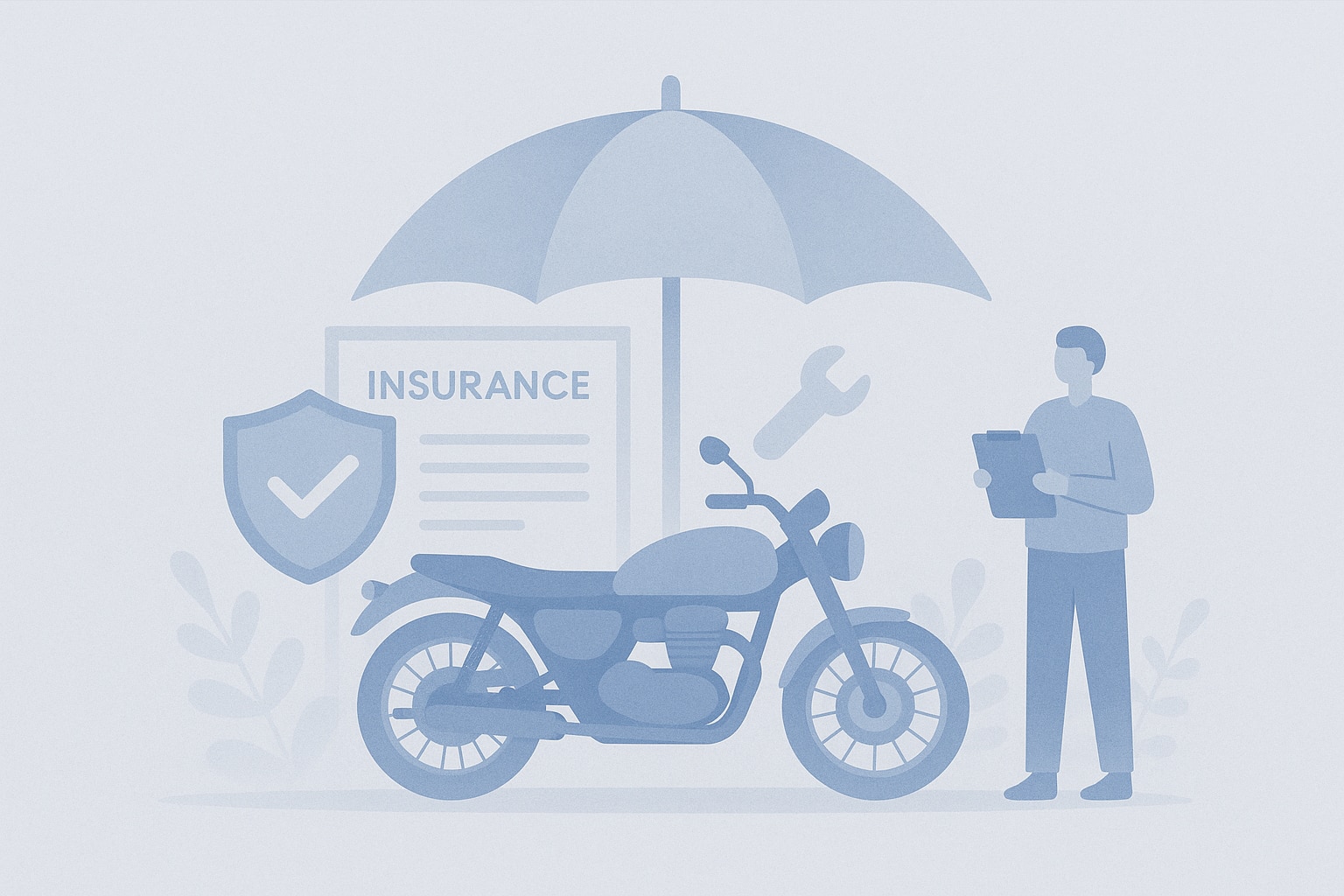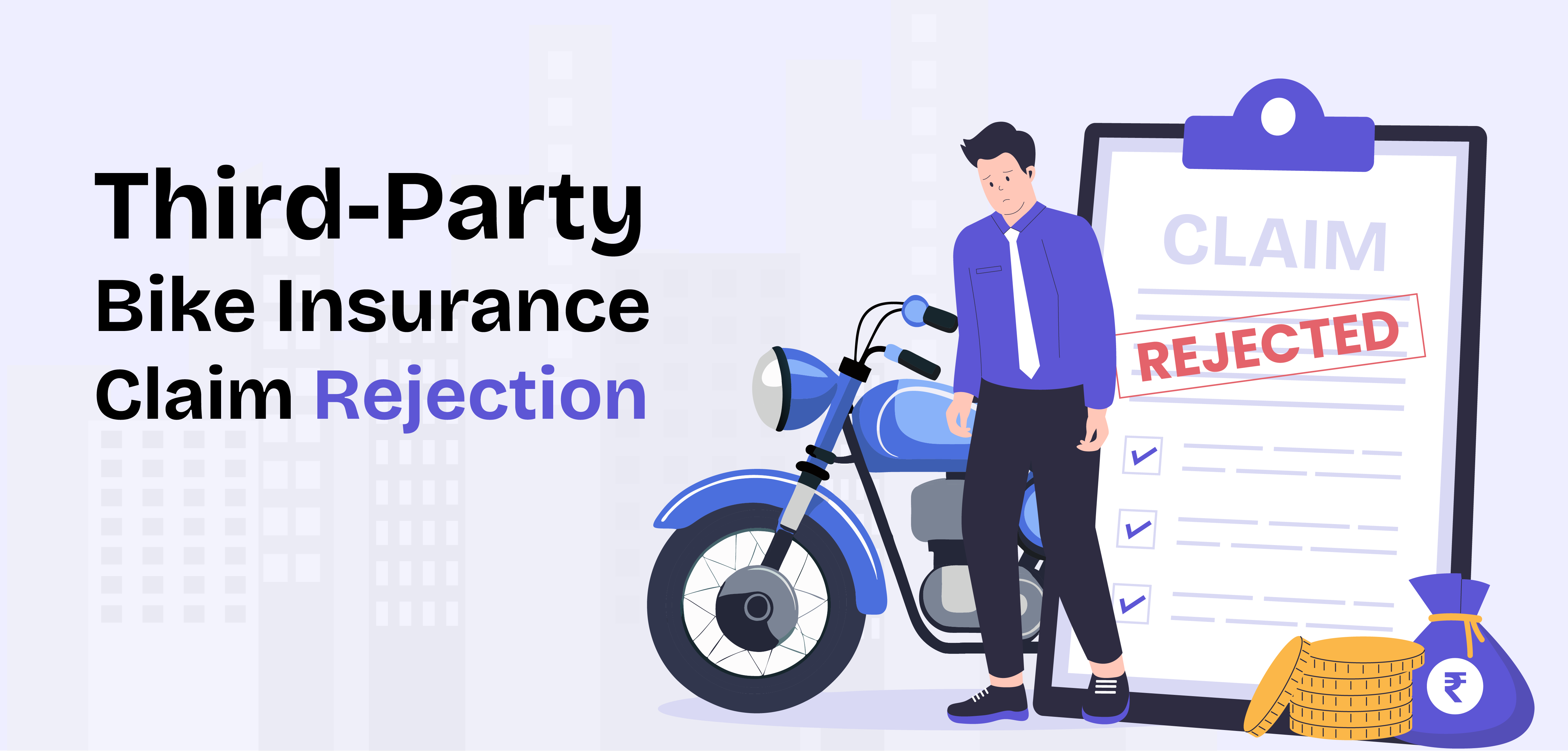Comprehensive Bike Insurance vs Third-Party Bike Insurance: A Detailed Comparison
You must have the right bike insurance policy to protect your two-wheeler against various types of unforeseen risks. Whether you are a daily commuter or a seasonal rider, you must understand the difference between comprehensive bike insurance and third-party bike insurance. On this page, you will learn about these two to make a financially sound and legally compliant decision.
What is Third-Party Bike Insurance?
Third-party bike insurance is a basic and legally mandatory policy that covers damages or injuries caused by your bike to another person, vehicle, or property in a road accident.
What is Comprehensive Bike Insurance?
Comprehensive bike insurance offers extensive protection. It covers both third-party liabilities and own damage to your bike due to accidents, theft, natural disasters, and more.
Comprehensive Vs. Third-Party Bike Insurance
The basic difference between a comprehensive and third-party bike insurance is their coverage benefits and premium amount. While third-party bike insurance covers only the third-party liabilities in a road accident by the insured bike or policyholder, a comprehensive two-wheeler insurance policy is more inclusive and cover the third-party liabilities along with any damage to the insured bike.
The table below highlights key differences between a comprehensive vs third-party two-wheeler insurance policy:
| Feature | Third-Party Insurance | Comprehensive Insurance |
| Coverage | Only third-party liabilities | Third-party + own damage |
| Legal Requirement | Mandatory | Optional but recommended |
| Premium | Low | Higher (due to broader coverage) |
| Add-ons | Only PA cover available (Mandatory add-on) | Multiple options |
| Own Bike Protection | Not covered | Fully covered |
| Customizability | Limited | Highly customizable |
| Financial Protection | Basic | Extensive |
Third-Party Bike Insurance Coverage
- Injury or death of a third party (as decided by a court of law)
- Damage to third-party property or vehicle
- Legal liabilities arising from the accident
What It Doesn't Cover?
- Damages to your own bike
- Theft of your bike
- Personal accident beyond the mandatory coverage
- Natural or man-made disasters affecting your bike
Benefits of Third-Party Bike Insurance
- Affordable Premiums: This policy is pocket-friendly as IRDAI regulates the premiums.
- Legal Compliance: Under the Motor Vehicles Act, 1988, every two-wheeler must be insured with this policy.
- Avoid Challans: As this is a mandatory policy, it helps the rider to avoid a challan of ₹2000 for not insuring the bike.
Comprehensive Bike Insurance Coverage
- All Third-Party Coverage
- Own damage from accidents
- Theft or burglary
- Fire or explosion
- Natural calamities (floods, earthquakes, storms, etc.)
- Man-made disasters (riots, vandalism)
Benefits of Comprehensive Insurance
- Complete peace of mind: It covers almost all possible risks, so the rider can enjoy the ride peacefully without worrying about the expenses.
- Customizable: A range of add-ons are available to tailor the policy to the exact needs of the policyholder.
- Higher resale value: A well-maintained insured bike with a comprehensive 2-wheeler insurance policy holds better value.
Add-Ons Available Under Comprehensive Bike Insurance Policy
- Zero depreciation cover
- Roadside assistance
- Engine protection cover
- NCB (No Claim Bonus) protection
- Return to invoice cover
Which One Should You Choose?
Choose Third-Party Insurance If:
- You have an older bike with low market value.
- You ride your bike infrequently.
- You’re looking for minimum legal compliance at a low cost.
Choose Comprehensive Insurance If:
- You have a new or high-value bike.
- You ride regularly in high-traffic or risky areas.
- You want financial protection from multiple types of damage.
- You prefer peace of mind with broader coverage and add-ons.
Factors to Consider Before Buying Bike Insurance
- Bike's Age and Value: As newer and higher-end models hold more value, getting comprehensive coverage and the right add-on covers will be better.
- Usage Pattern: The daily commuters and frequent riders are more exposed to risks; hence, a usage pattern is considered while buying a policy.
- Location: Urban areas have higher chances of theft and accidents, which is why location plays a key role in deciding the two-wheeler insurance premium.
- Budget: A comprehensive two-wheeler insurance plans are costlier but offer extensive protection.
- Add-On Needs: Choosing add-ons means customizing your policy to get extra protection which is not offered in a comprehensive bike policy but it may increase the cost.
Final Verdict: Which One is Better?
Choosing between comprehensive and third-party bike insurance depends on your personal needs, bike condition, and financial preferences. While third-party insurance is the minimum legal requirement, comprehensive insurance offers all-around protection that can save you significant expenses in the long run.
Comprehensive two-wheeler insurance is the better choice for maximum protection and peace of mind, especially for newer or high-end bikes. However, third-party two-wheeler insurance is sufficient if you want to meet just the legal requirement with the lowest premium.
FAQs – Comprehensive VS Third-Party Bike Insurance
-
Q.1 Is it mandatory to have comprehensive bike insurance?
Ans: No, only third-party two-wheeler insurance is mandatory by law. A comprehensive two-wheeler insurance is optional but highly recommended. -
Q.2 Can I upgrade from third-party to comprehensive insurance?
Ans: Yes, you can upgrade your policy during renewal of the policy or by contacting your insurer in between the policy tenure. -
Q.3 How is the bike insurance premium calculated?
Ans: The bike insurance premium depends on the bike’s age, make & model, engine capacity, location, and coverage type. -
Q.4 How is the bike insurance premium calculated?
Ans: The bike insurance premium depends on the bike’s age, make & model, engine capacity, location, and coverage type. -
Q.5 Should I get comprehensive or third-party insurance?
Ans: Comprehensive is better if you want full protection (own damage + third-party). Whereas third-party is cheaper but offers limited coverage and is mandatory also. -
Q.6 Which is better: comprehensive or third-party insurance?
Ans: Comprehensive 2-wheeler insurance is better overall as it covers damages to your bike and the other party in a road accident. -
Q.7 Is comprehensive insurance enough for a bike?
Ans: Yes, technically it covers various aspects, such as accidents, theft, fire, natural calamities, third-party liability, etc. Additionally, you get an option to enhance the policy coverage with the help of add-ons. -
Q.8 What are the disadvantages of third-party insurance?
Ans: The major drawback of having third-party bike insurance for a rider is not having any coverage of their own vehicle. Any mishap will lead to a financial setback as they must pay independently. -
Q.9 How many years is third-party insurance good for?
Ans: New bikes are mandatory for 5 years as per Indian law. After that, it can be renewed annually.
^The buying/renewal of insurance policy is subject to our operations not being impacted by a system failure or force majeure event or for reasons beyond our control. Actual time for a transaction may vary subject to additional data requirements and operational processes.
*TP price for less than 75 CC two-wheelers. All savings are provided by insurers as per IRDAI-approved insurance plan. Standard T&C apply.
*Rs 538/- per annum is the price for third party motor insurance for two wheelers of not more than 75cc (non-commercial and non-electric)
#Savings are based on the comparison between the highest and the lowest premium for own damage cover (excluding add-on covers) provided by different insurance companies for the same vehicle with the same IDV and same NCB.
*₹ 1.5 is the Comprehensive premium for a 2015 TVS XL Super 70cc, MH02(Mumbai) RTO with an IDV of ₹5,895 and NCB at 50%.
*₹457/- per annum (₹1.3/day) is the price for third-party motor insurance for private electric two-wheelers of not more than 3KW (non-commercial). Premium is payable annually. The list of insurers mentioned is arranged according to alphabetical order of the names of insurers respectively. Policybazaar does not endorse, rate or recommend any particular insurer or insurance product offered by any insurer. The list of plans listed here comprise of insurance products offered by all the insurance partners of Policybazaar. For the complete list of insurers in India, refer to the Insurance Regulatory and Development Authority of India website: www.irdai.gov.in


























